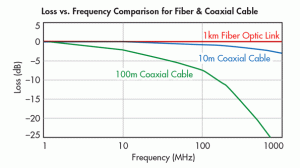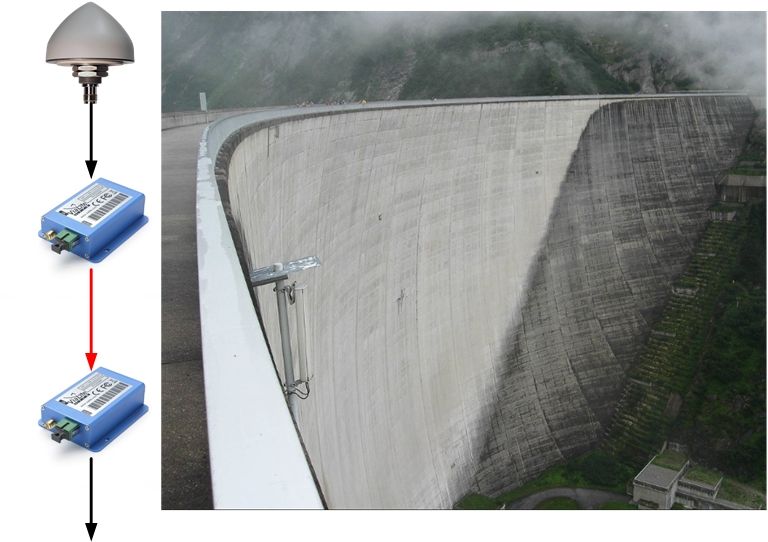Austrian earthquake monitoring station deploys GPS-over-fibre system
Seismology instruments in a signal-denied location benefit from a GPS-over-fibre link
The Background

Based in Vienna, Zentralanstalt für Meteorologie und Geodynamik (ZAMG) offers a broad range of services, including archaeological ground surveys and earthquake monitoring.
Highly sensitive accelerometers are used to detect earthquake and after-shock tremors.
Networks that interconnect accelerometers and other devices are synchronised using the extremely accurate GPS clock. A GPS antenna with a coaxial cable is often used to convey the signal from outside the building to the indoor space in which it is needed.
The Challenge
One of ZAMG’s monitoring facilities is located 100 meters below a dam, deep in the heart of the Austrian Alps.

- Low-loss cable is often several millimetres in diameter and is heavy and difficult to install over long distances.
- Signal can be affected by electromagnetic interference (EMI), especially if it is positioned near power lines.
- Coaxial cables can be adversely affected by temperature changes, severe weather (lightning) and moisture.
- In-line amplifiers can be used to overcome signal losses caused by attenuation but can introduce unwanted noise and distortion.
The Solution
FalTech Ltd was asked to provide a solution to transport the GPS signal from an antenna located above the dam to the monitoring station below, using existing single-mode optical fibre.
GPS antenna cable extended by a
Vialite GPS-over-fibre link
ViaLite BLUE OEM optical transceivers from ViaLite Communications were selected due to their small size, connectivity options and low power consumption.
At the top of the dam a short coaxial cable connects the antenna to a ViaLiteHD optical transmitter (TX) module located just inside the building.
The optical transmitter module converts the RF signals into light by modulating a high-quality DFB laser light source. The modulated signal is transported through an optical fibre to a ViaLiteHD optical receiver (RX) module located 100 meters below.
Here the signal is converted back to its original form and is connected to the GPS receiver by another short coaxial cable.
The flexible ViaLiteHD modules can be configured with extra gain if required, to overcome any losses in the signal power from the antenna through to the “customer equipment” location.
The Result
The ViaLite Blue modules were supplied with SMA RF connectors and SC/APC optical connectors and were quickly and easily installed at the monitoring site.
The optical fibre link provides immunity to EMI and extends the GPS signal to areas where coaxial cable would not be a practical solution.
The network now benefits from a consistent signal from several satellites, ensuring that all devices are synchronised to the GPS clock signal.
Nikolaus Horn, seismologist at ZAMG commented:
“The ViaLiteHD solution was specified for us by FalTech Ltd, who supplied all the necessary parts to complete the installation from end to end.
The system was easy to implement, allowing us to overcome RF losses in a very challenging environment by using existing optical fibre.”
For over 25 years ViaLite has specialised in providing fibre links for many applications for the satcom, broadcast and time and synchronisation industries.
ViaLite’s expertise in GPS-over-fibre applications was key to the success of this project and provided FalTech with technical backup when specifying a system for ZAMG.
For more information you can email FalTech through the contact page or if you would prefer a good old-fashioned chat, we still have a telephone in the office. Please call 01326 336 444 in the UK or +44 1326 336 444 from outside the UK.
Need help to decide which system is right for you?
Or call us on

